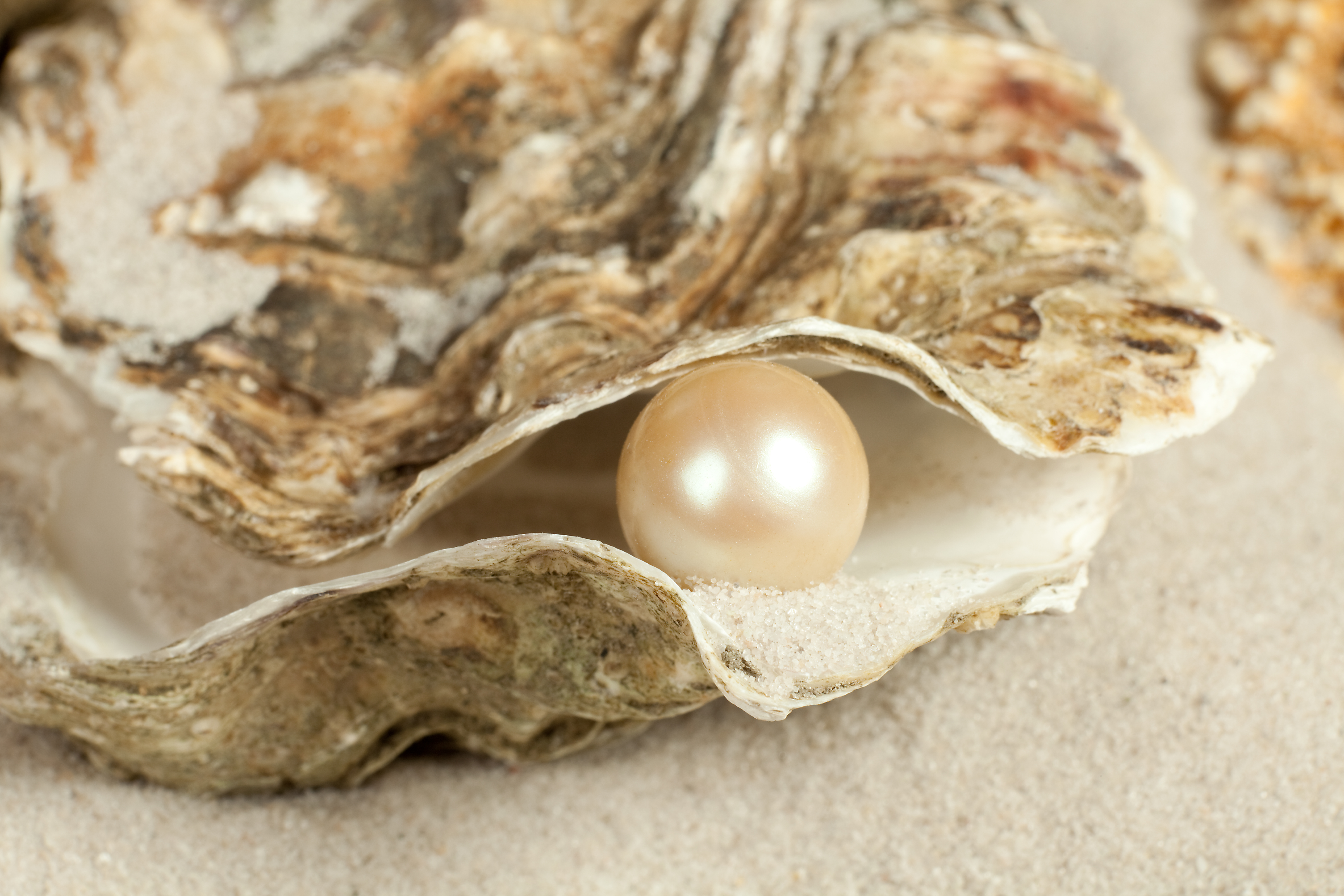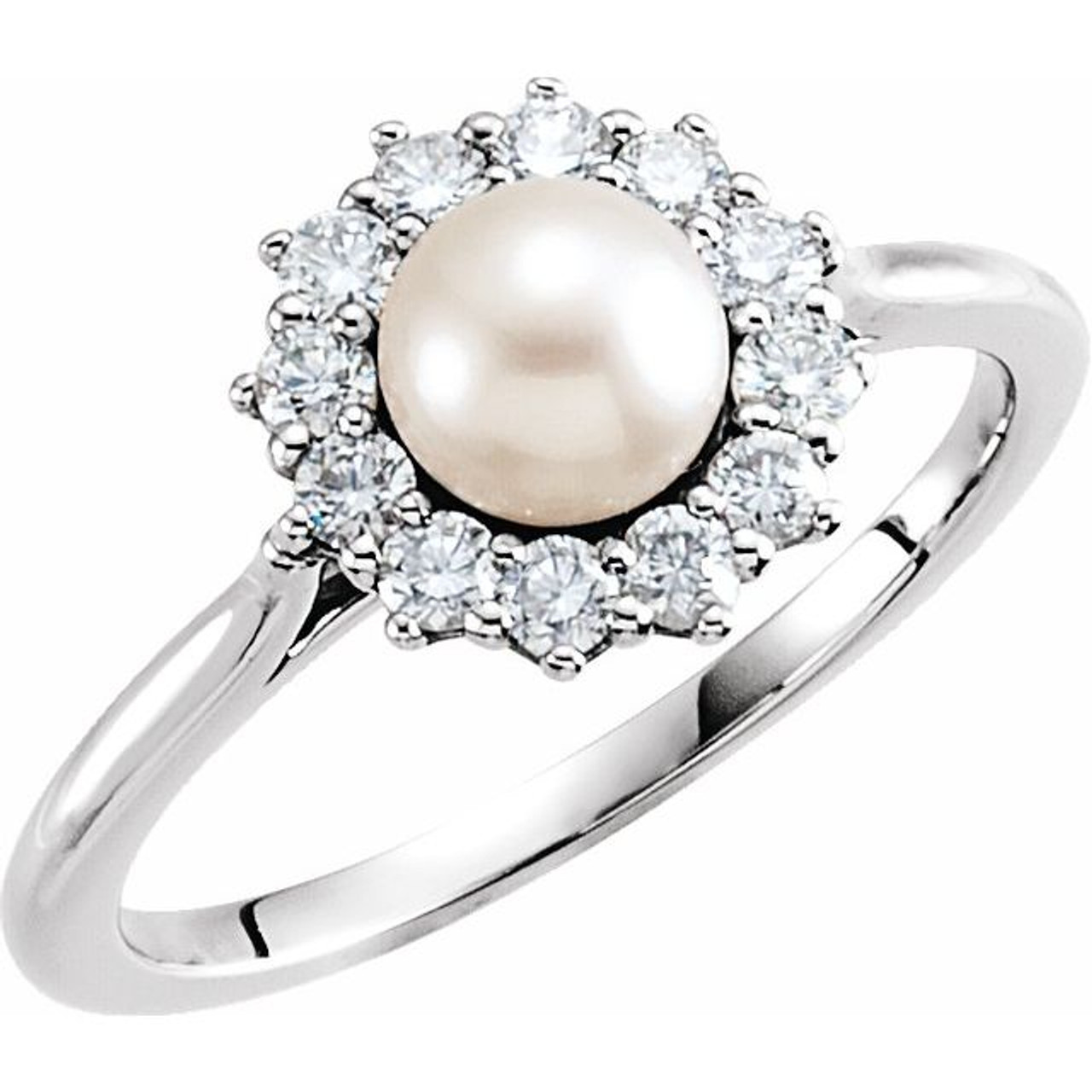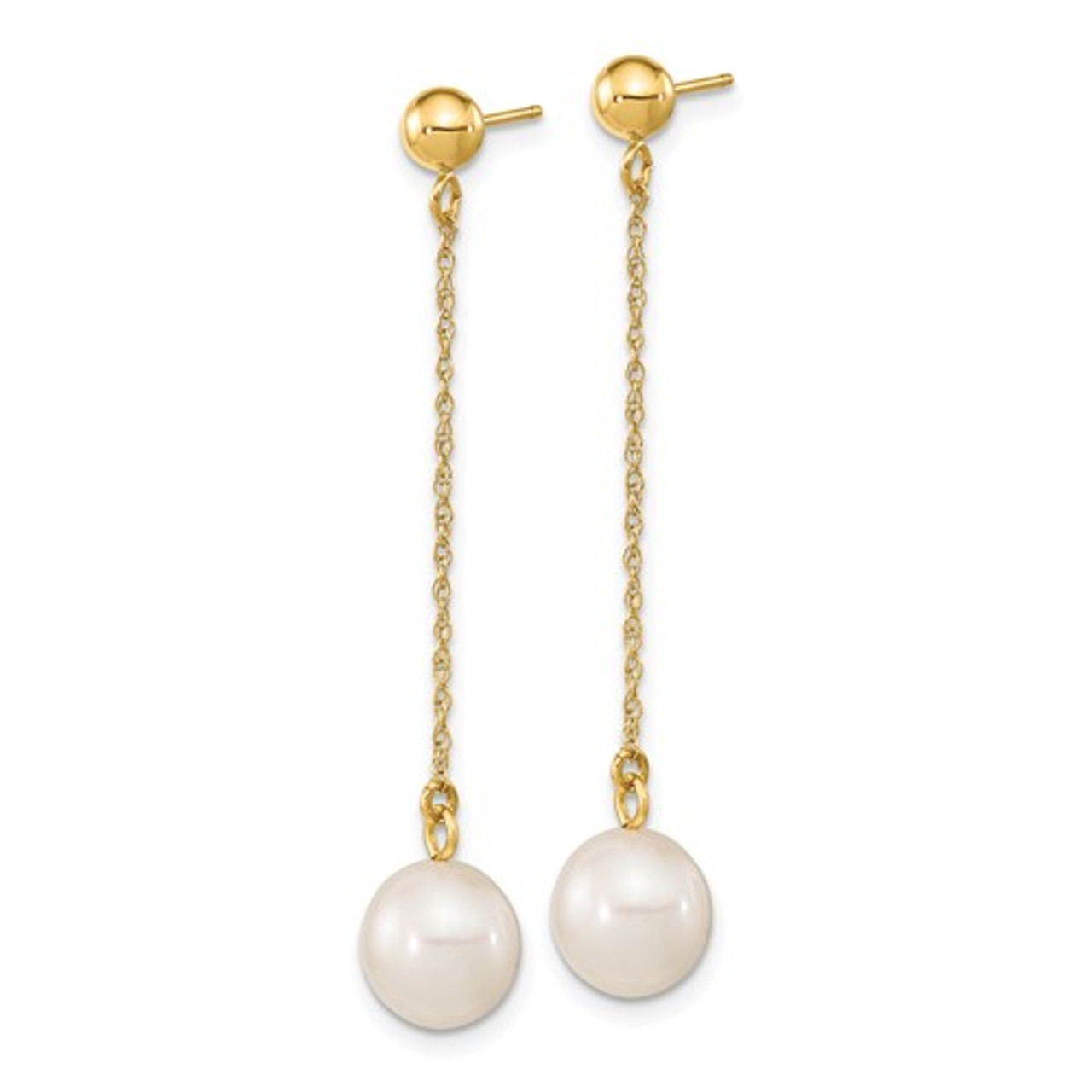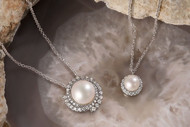Aug 30th 2021
Meet the Pearl: Queen of Gems and Gem of Queens
We love a big, glistening diamond as much as the next person. But is your future spouse a sucker for a silky smooth pearl? If so, you’re in luck! Pearls are a popular choice for wedding jewelry and one of the June birthstones. Before you start shopping, learn more about this precious gem that has represented beauty, wealth, purity and innocence for centuries.
History of Pearls
Natural pearls were first documented more than 4,000 years ago by a Chinese historian in 2206 B.C.E.! Back in ancient times, people across the globe had different thoughts on how pearls were created. For example, Chinese residents believed that pearls formed in the brains of dragons and therefore protected against the fire-breathing creatures. In the Middle East, locals thought that pearls originated as teardrops in heaven, while Christopher Columbus believed that mollusks formed them out of dew drops.
At the time, natural pearls were typically found in the Persian Gulf, the Red Sea, Chinese rivers and lakes, European rivers and the waters of what’s now known as Sri Lanka. Starting in the 16th century, pearls were also plentiful just off of Mexico, Central America and Venezuela.
But today, these areas have few pearls. In fact, it’s now extremely rare to find natural pearls due to centuries of “pearl fishing” (aka gathering/harvesting). Instead, cultured pearls are widely available for sale.
Natural vs. Cultured
So, what exactly are natural vs. cultured pearls? To put it simply, natural pearls form without human intervention, while cultured pearls require human help.
All pearls are created inside of the tissue of mollusks, such as oysters or mussels. The process begins when a mollusk releases a substance, called nacre (aka mother of pearl), around a tiny irritant that has entered its shell, like a grain of sand, parasite or another organism in the water. After a growth period, a natural pearl is born!
With cultured pearls, a technician inserts a mother-of-pearl bead or piece of tissue into the mollusk through a surgical procedure to begin pearl development. The bead/tissue acts as the irritant in the growth process. The mollusk then releases nacre to cover the bead/tissue, and a pearl is created.

Unlike natural pearls that grow in natural bodies of water, cultured pearls are grown in pearl farms, where mollusks are cleaned, protected from predators and cared for until they’re old enough to accept the mother-of-pearl bead. Since pearl-producing mollusks don’t thrive in polluted waters, pearl farms are often located away from society.
It’s important to note that a pearl CAN be removed without killing the mollusk, so one mollusk is therefore able to produce multiple pearls. This makes pearls an ethical choice when shopping for wedding jewelry!
*Pro Tip: According to the American Gem Society, the quality of nacre released by a mollusk affects a pearl’s shine, which in turn impacts the gem’s beauty and value.
Freshwater vs. Saltwater
Pearls can be found in bodies of both freshwater and saltwater all over the world, but they exhibit important differences, depending on where they’re grown. For starters, oysters, a type of mollusk, typically produce pearls in saltwater, particularly in Australia, Tahiti, Indonesia and Thailand. Mussels, another type of mollusk, usually produce pearls in freshwater, primarily in China, Japan and the U.S.
Saltwater pearls tend to be more spherical in shape and reflect white and cream shades, while freshwater pearls are usually oval or button-shaped and available in a range of colors. Small quantities of the saltwater gems grow over several years and feature a thin coating of nacre. On the other hand, larger quantities of the freshwater gems typically grow in a matter of months and feature a thicker layer of nacre, making them less likely to chip or flake.
But even though saltwater pearls have less nacre, they offer a glossier appearance. As a result, these pearls are in high demand, which means higher prices for buyers.
Pearl Fun Facts
 Pearl is the official gem for celebrating third and 30th anniversaries.
Pearl is the official gem for celebrating third and 30th anniversaries.
 They’re the only gems created by living animals.
They’re the only gems created by living animals.
 You may often see white or cream-colored pearls, but they’re available in a variety of colors, including black, gray, yellow, orange, pink, lavender, green and blue.
You may often see white or cream-colored pearls, but they’re available in a variety of colors, including black, gray, yellow, orange, pink, lavender, green and blue.
 On the Mohs Hardness Scale, which measures gemstones’ hardness and resistance to scratching, pearls score between 2.5 and 3. For comparison, diamonds score a perfect 10. This makes pearls truly precious gems!
On the Mohs Hardness Scale, which measures gemstones’ hardness and resistance to scratching, pearls score between 2.5 and 3. For comparison, diamonds score a perfect 10. This makes pearls truly precious gems!
 Mollusks don’t always produce high-quality pearls. In fact, different types of mollusks create pearls that can look rather different. More than 10,000 pearls may be examined before they’re matched and selected for a single 16-inch strand of pearls.
Mollusks don’t always produce high-quality pearls. In fact, different types of mollusks create pearls that can look rather different. More than 10,000 pearls may be examined before they’re matched and selected for a single 16-inch strand of pearls.
 If you can’t get your hands on a natural or cultured pearl, imitation pearls, typically coated glass beads, also exist! While they might not appear as glossy as natural or cultured pearls, they still offer plenty of shimmer.
If you can’t get your hands on a natural or cultured pearl, imitation pearls, typically coated glass beads, also exist! While they might not appear as glossy as natural or cultured pearls, they still offer plenty of shimmer.
 In 1917, French jeweler Pierre Cartier traded two strands of pearls, reportedly worth more than $1 million at the time, in exchange for a set of keys to a Renaissance-style mansion on Fifth Avenue in New York City. The mansion was transformed into the New York headquarters of Cartier, a fine jewelry company with national and international stores.
In 1917, French jeweler Pierre Cartier traded two strands of pearls, reportedly worth more than $1 million at the time, in exchange for a set of keys to a Renaissance-style mansion on Fifth Avenue in New York City. The mansion was transformed into the New York headquarters of Cartier, a fine jewelry company with national and international stores.
 The desire for British pearls was rumored to be a key reason for Rome’s invasion of Britain almost 2,000 years ago. Roman general Julius Caesar reportedly even dedicated a pearl-studded breastplate to the Roman goddess Venus.
The desire for British pearls was rumored to be a key reason for Rome’s invasion of Britain almost 2,000 years ago. Roman general Julius Caesar reportedly even dedicated a pearl-studded breastplate to the Roman goddess Venus.
 A 50.56-carat pearl, called La Peregrina, is said to be one of the most famous natural pearls. The pear-shaped gem, roughly the size of a pigeon’s egg, was found in the Gulf of Panama during the 1500s. La Peregrina is featured in a magnificent necklace with diamonds and additional pearls, and it has been owned by several famous individuals over the years, including Mary I of England, Philip II of Spain and Elizabeth Taylor. In 2011, a New York auction house sold La Peregrina and the necklace for $11.8 million.
A 50.56-carat pearl, called La Peregrina, is said to be one of the most famous natural pearls. The pear-shaped gem, roughly the size of a pigeon’s egg, was found in the Gulf of Panama during the 1500s. La Peregrina is featured in a magnificent necklace with diamonds and additional pearls, and it has been owned by several famous individuals over the years, including Mary I of England, Philip II of Spain and Elizabeth Taylor. In 2011, a New York auction house sold La Peregrina and the necklace for $11.8 million.
Shop Our Favorite Pearl Jewelry



Gage Diamonds is Chicago's premier jewelry showroom and online retailer of engagement rings, wedding bands, and fine jewelry.
We’re committed to helping you find the ring of your dreams. For inspiration, browse our website or set up an appointment with a member of our trusted staff at our in-person showroom.
We offer no-credit-needed financing – feel free to apply and get your approval within 24 hours!
Pay over time, because love shouldn’t wait.
 VISIT OUR SHOWROOM
VISIT OUR SHOWROOM Reviews on Google!
Reviews on Google!





